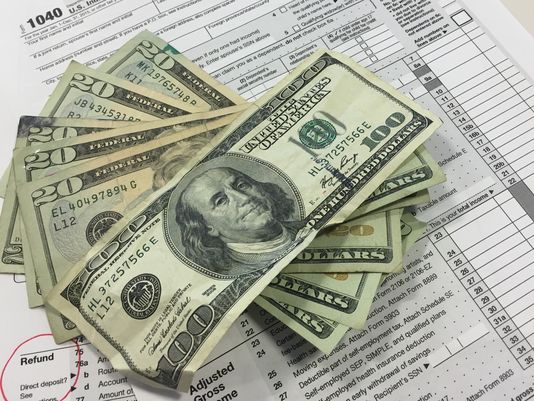All sorts of factors can contribute to delaying when you receive your income tax refund.
The official word from the Internal Revenue Service is that it takes up to 21 days after the IRS accepts your e-filed tax return to get your refund. If you mailed your tax return, the refund process for those paper returns can range from six weeks to eight weeks after the date the IRS receives the return.

You can check the status of your federal refund online at “Where’s my refund?” at IRS.gov. You’d need your Social Security number, your filing status and the exact amount of the refund. Don’t try to check every hour, though. The IRS said its refund information is only updated once every 24 hours or so, usually overnight. And there’s also an app to track your refund: IRS2Go app.
But, (and isn’t there always a but?) there can be plenty of reasons that a refund can take longer to process. Such as:
Did you file an amended tax return? It could take up to 16 weeks to get that refund. To check the status of an amended return, you’d go to IRS.gov for Where’s my amended return?
Are some of your refund money going toward past-due child support? Again, it’s going to take longer for you to receive what’s left.
Were you a victim of ID theft where crooks filed a tax return using your ID? Mark Ciaramitaro, vice president of tax products for H&R Block, said it can take anywhere from six months to a year for some tax-refund victims to get their own tax refunds, as the ID theft mess is investigated.
Was your tax return incomplete? Did it contain some errors? If so, the tax refund could take longer than normal to process.
Did you put the right bank account information on the return? The IRS notes that if you incorrectly enter an account or routing number that belongs to someone else and your financial institution deposits the money into someone else’s account, you must work with the bank to recover your money. If you contact the bank and two weeks have passed with no results, file Form 3911 “Tax Statement Regarding Refund” with the IRS if the refund check is lost or if there has been trouble receiving the refund money.
Direct deposit for tax refunds can go very wrong
“The fastest way to get your refund is to ensure the return you file is error-free,” said Luis Garcia, a spokesman for the IRS in Detroit.
It’s possible, he said, the refund could face further delays if you used nicknames, or your married name doesn’t match up to the name on file with Social Security.
It’s best to track that refund online at IRS.gov with “Where’s My Refund?” But if you’re not satisfied with the answer you get online, you can contact the IRS at 800-829-1040.
Susan Allen, certified public accountant and lead technical manager for the tax division of the American Institute of CPAs, said in order for an IRS employee to assist you, more than 21 days must have passed since you received your e-file acceptance notification (or more than six weeks has passed if you mailed your tax return). You can also work with your CPA to resolve any IRS issues.
The refund process was slightly slower going into early April, according to the numbers from the Internal Revenue Service. About 76 million refunds were issued through April 1, down about 1.5% from a similar period last year. The average refund was $2,989 through April 1 — up to $10 from a similar time last year. More than 86% of refunds so far are directly deposited into bank accounts or onto prepaid cards.
Best tip of all: Don’t spend the refund money the very second you e-file that tax return. It’s going to take more than a few days to get that actual cash in your hands.

